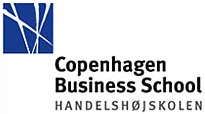No 02-2010: Flexibility in Trade Bloc Design
Mark Melatos and Stephanie Dunn
Abstract: A key characteristic of any trade bloc is its “flexibility” – the extent to which it can be modified or augmented by existing members. This paper investigates how prospective trade bloc members value the flexibility of proposed trade agreements in a changing trading environment. We demonstrate that country characteristics as well as the nature of the trade shock influence a nation’s desire for trade bloc flexibility. Our model of endogenous coalition formation yields predictions that are consistent with three stylized facts which characterize regionalism: (i) overlapping trade agreements, (ii) the popularity of free trade areas relative to customs unions and (iii) renegotiation or disbandment of existing trade agreements is rare. Finally, for the first time in the literature, we provide clear predictions about the identity of “hub” and “spoke” trade bloc members when overlapping free trade areas arise in equilibrium.
Keywords: Trade agreement flexibility; optimal trade bloc design; regional trade agreements; free trade areas; customs unions.
24 pages, February 23, 2010
Full text files
8069Full text
- Copenhagen Business School, Department of Economics
- Ordering Working Papers
- Home page for this series
Questions (including download problems) about the papers in this series should be directed to CBS Library Research Registration Team ()
Report other problems with accessing this service to Sune Karlsson ().
RePEc:hhs:cbsnow:2010_002This page generated on 2024-09-13 22:14:19.

